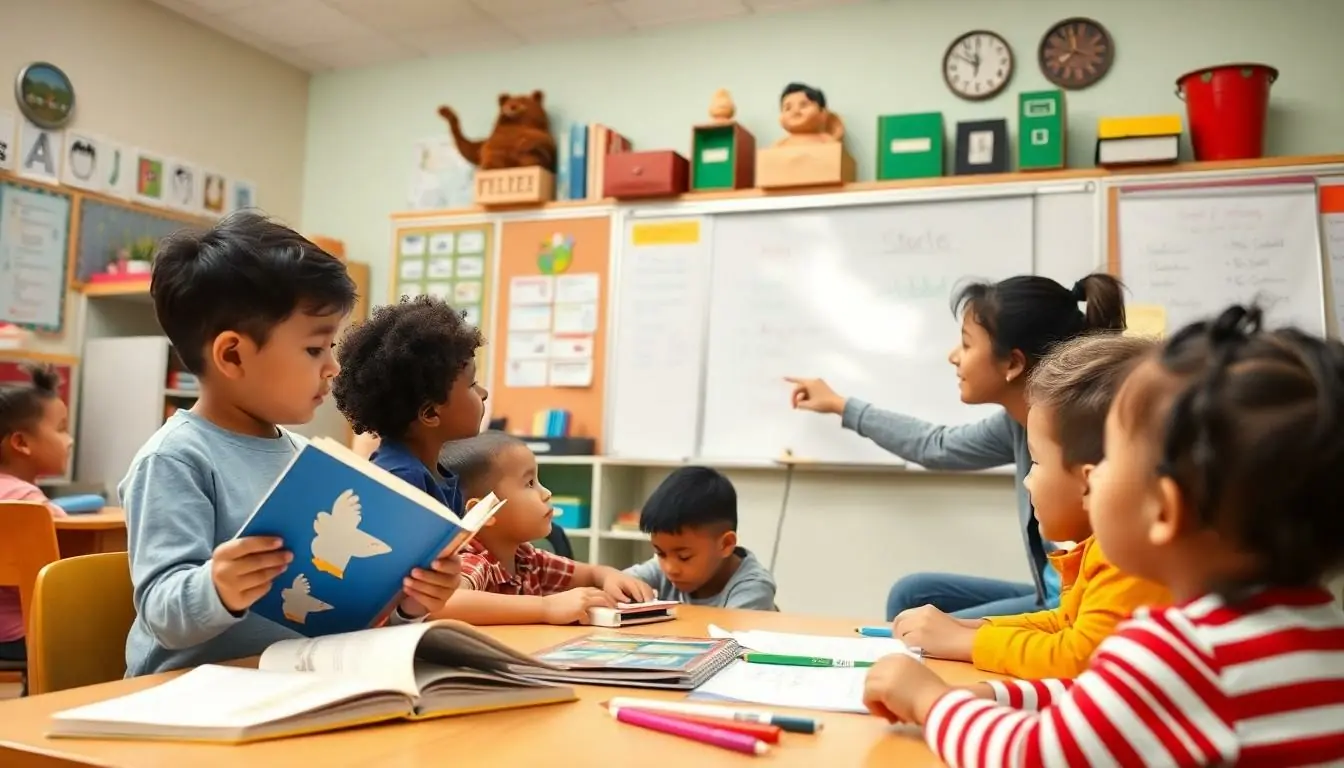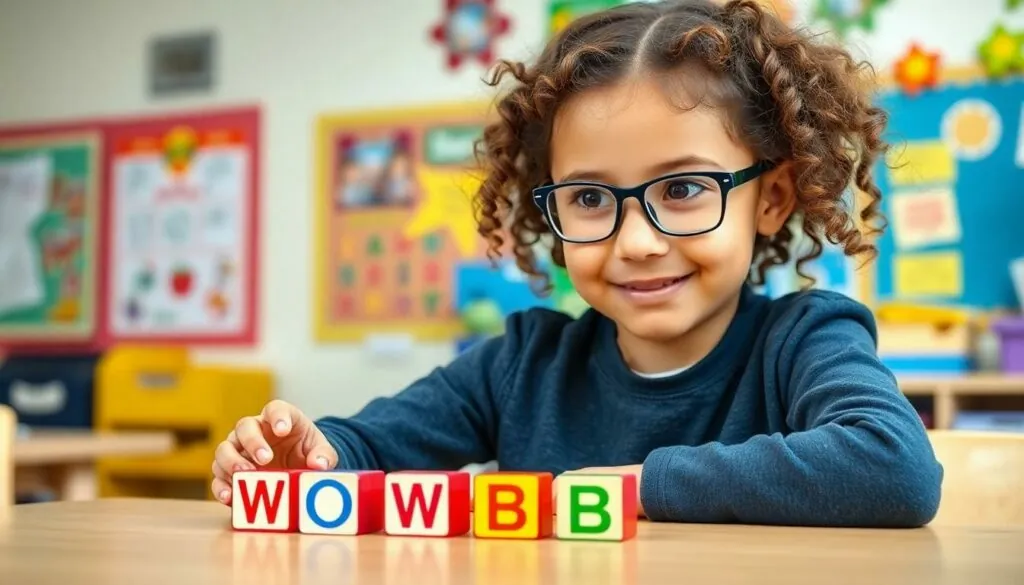Language learning disabilities can feel like navigating a maze with no exit sign. For many, the struggle to grasp new languages can be frustrating, leaving them lost in translation while their peers seem to breeze through. But fear not! Understanding these challenges is the first step toward turning that language barrier into a stepping stone.
Table of Contents
ToggleUnderstanding Language Learning Disability
Language learning disability refers to a specific difficulty in acquiring and using language skills. Individuals with this condition often struggle with reading, writing, speaking, or understanding language. These challenges vary in severity, impacting communication effectiveness.
Various factors contribute to language learning disabilities. Genetic predisposition plays a significant role, as family history often influences language acquisition difficulties. Neurological factors also affect how individuals process language, which can lead to challenges in fluency and comprehension. Researchers identify these disabilities as a result of complex interactions between cognitive, linguistic, and environmental influences.
The emotional toll is notable. Many individuals experience frustration and low self-esteem when faced with language learning challenges. Peer comparisons can intensify feelings of inadequacy, making it essential to foster a supportive environment. Teachers, parents, and peers can create opportunities for growth by encouraging persistence and providing essential resources.
Identifying language learning disabilities can be difficult. Often, professionals utilize standardized assessments to evaluate language abilities. Early intervention enhances the chances of overcoming obstacles, making prompt recognition crucial. Tailored strategies can improve outcomes, including specialized teaching methods and personalized learning plans.
Addressing language learning disabilities requires a multi-faceted approach. Collaboration among educators, therapists, and families empowers individuals to navigate their language journey. Awareness and understanding help demystify these challenges, paving the way for effective support systems and successful language acquisition.
Causes of Language Learning Disability

Language learning disabilities stem from various causes that intertwine genetics and environmental factors. Understanding these elements helps clarify the complex nature of these disabilities.
Genetic Factors
Genetic factors significantly impact language learning disabilities. Research shows a strong hereditary component, with family history often playing a crucial role. Individuals with a parent or sibling experiencing similar challenges are more likely to encounter language learning difficulties. Genetic variations can affect brain structure and function, altering the ability to process language. Specific genes associated with language development may also contribute to these struggles. The interaction between multiple genes further complicates this condition, indicating the necessity for continued research in this area.
Environmental Influences
Environmental influences hold considerable sway over the development of language skills. Exposure to language during early childhood significantly shapes learning outcomes. Children who engage in regular conversations and reading activities generally show stronger language abilities. Conversely, limited exposure can hinder language acquisition, leading to disabilities. Socio-economic factors also play a role; children from disadvantaged backgrounds may lack access to resources that promote language development. Educational environments featuring supportive teaching methods further enhance language skills, demonstrating that targeted interventions can make a crucial difference in overcoming these challenges.
Signs and Symptoms
Identifying language learning disabilities early can significantly impact intervention effectiveness. Recognizing specific signs is essential for parents and educators.
Early Warning Signs
Delayed speech development often marks the onset of a language learning disability. Difficulty following directions can show up in children as they may struggle to grasp multi-step tasks. Challenges may arise in vocabulary acquisition, with limited word usage becoming noticeable. Mispronouncing words frequently further indicates potential issues. Struggles with rhyme or sound patterns may manifest during early reading activities. These early signs, if observed consistently, warrant further evaluation to address the learning barriers effectively.
Behavioral Indicators
Behavioral changes can also highlight language learning disabilities. Frustration during language tasks often leads to avoidance of reading or speaking situations. Inappropriate responses or misunderstandings in conversations may occur due to processing challenges. Low self-esteem may become evident as individuals compare their abilities with peers. Reluctance to participate in group discussions signals discomfort and anxiety surrounding language use. These behaviors underline the importance of timely recognition and supportive interventions to foster confidence and skill development.
Assessment and Diagnosis
Assessment and diagnosis of language learning disabilities involve a comprehensive approach. Utilizing standardized tests plays a crucial role in evaluating language abilities.
Standardized Testing
Standardized testing provides measurable data on language skills. These assessments typically focus on components like vocabulary, grammar, and comprehension. Results from these tests help identify specific areas of difficulty, guiding targeted interventions. They often compare a child’s performance to developmental benchmarks. Diagnostic tools, such as the Woodcock-Johnson Tests of Cognitive Abilities, offer detailed insights into language processing challenges. Administering these assessments usually requires trained professionals to ensure accuracy in interpretation.
Observational Methods
Observational methods reveal real-time language use in natural settings. Observations focus on interactions during everyday activities, highlighting a child’s strengths and weaknesses in language use. Teachers and parents can note behaviors, including how well a child follows directions or participates in conversations. Gathering anecdotal records adds context to standardized data, providing a fuller picture. Collaborating with educators, therapists, and family members fosters a supportive atmosphere for evaluating communication skills. Combining observational data with test results strengthens the diagnosis and informs effective teaching strategies.
Intervention Strategies
Intervention strategies play a crucial role in supporting individuals with language learning disabilities. Effective approaches address specific challenges through tailored methods, enhancing language acquisition and communication skills.
Educational Approaches
Structured literacy programs emphasize phonics and decoding skills, enabling learners to grasp language fundamentals. Multi-sensory techniques engage various senses, making learning interactive and enjoyable. Additionally, visual aids and technology can strengthen comprehension and retention. Small group instruction promotes peer interaction, allowing learners to practice language skills in a supportive environment. Teachers often provide individualized support, adjusting lessons to meet each student’s needs and pace. Creating a language-rich environment further encourages exploration and use of vocabulary.
Therapeutic Approaches
Speech-language therapy focuses on improving language skills through targeted exercises and activities. Individual sessions allow therapists to tailor strategies to specific difficulties. Group therapy fosters communication skills through social interaction with peers facing similar challenges. Techniques such as play therapy offer engaging methods for developing language in relaxed settings. Cognitive-behavioral therapy helps address emotional aspects, improving self-esteem and reducing anxiety related to language tasks. Combining these therapeutic approaches creates a comprehensive support system for individuals navigating language learning disabilities.
Supporting Individuals with Language Learning Disability
Individuals with language learning disabilities thrive when provided with structured support. Various approaches can enhance their learning experiences, promoting confidence and comprehension.
Role of Parents and Caregivers
Parents and caregivers play a vital role in supporting individuals with language learning disabilities. They can foster language development by engaging in daily conversations, reading together, and encouraging social interactions. Creating a supportive home environment boosts confidence and motivation. Monitoring progress helps identify areas needing additional focus. Parents may also seek resources, such as books and educational games, tailored to their child’s needs. Open communication between parents and children encourages expression and alleviates frustration. Emphasizing strengths rather than weaknesses builds self-esteem and resilience.
Collaboration with Educators
Collaboration with educators enhances the effectiveness of interventions for individuals with language learning disabilities. Teachers can implement structured learning programs that accommodate diverse learning styles. Regular communication between parents and educators allows for synchronized efforts to address specific challenges. Educators can create individualized learning plans to meet each student’s requirements. Providing feedback is essential for guiding improvement and adjusting strategies. Professional development for teachers on language learning disabilities equips them with necessary skills. Cooperative efforts foster an inclusive classroom environment that nurtures students’ potential for success.
Language learning disabilities present unique challenges that can feel overwhelming. However with proper support and understanding these obstacles can be transformed into opportunities for growth. Early identification and tailored intervention strategies are vital for helping individuals navigate their language journeys.
Collaboration among educators therapists and families creates a nurturing environment that empowers those facing these challenges. By fostering a supportive atmosphere and utilizing effective teaching methods individuals can build confidence and enhance their language skills. Ultimately the path to language proficiency may be complex but with the right resources and encouragement success is within reach.






